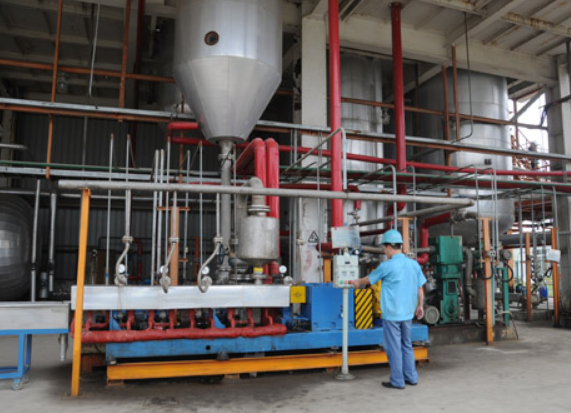In today's world, sustainability is at the forefront of innovation, and one of the biggest challenges we face is how to reduce carbon dioxide (CO2) emissions. While CO2 is primarily known as a greenhouse gas contributing to global warming, recent advancements show that it can also serve a more constructive purpose—making plastics. Yes, you read that right! CO2, which was once just seen as a pollutant, is now being explored as a raw material for manufacturing sustainable plastics. But how is this possible, and what does it mean for the future of the plastics industry? Let’s dive into the fascinating world of CO2-based plastics.
What Are CO2-Based Plastics?
CO2-based plastics refer to materials that use carbon dioxide as one of the core ingredients in the polymer-making process. These types of plastics are often referred to as “green plastics” due to their lower environmental impact compared to traditional petroleum-based plastics.
How Is CO2 Used in Plastic Production?
The process of making plastics from CO2 involves capturing CO2 from industrial emissions or the atmosphere and then incorporating it into the production of polymers. This is done through various chemical reactions, where CO2 is chemically bonded with other compounds to form polycarbonates, polyurethanes, or other polymer materials.
Step-by-Step Process of CO2-Based Plastic Manufacturing
1. CO2 Capture: CO2 is captured from sources such as power plants or other industrial processes.
2. Catalysis: Special catalysts are used to enable the reaction between CO2 and other chemicals.
3. Polymerization: CO2 is incorporated into polymers, creating new forms of plastic.
4. Product Formation: The resulting material can be molded into various products, ranging from bottles to building materials.

Benefits of Using CO2 in Plastics
Reducing Carbon Emissions
One of the primary benefits of using CO2 in plastic production is the potential to reduce overall carbon emissions. By capturing and utilizing CO2, this method effectively recycles what would otherwise contribute to climate change.
Conserving Petroleum Resources
Traditional plastics are made from petrochemicals, primarily derived from fossil fuels. By using CO2 as an alternative, the reliance on oil and natural gas is reduced, making the process more sustainable in the long run.
Energy Efficiency
CO2-based plastic manufacturing is often more energy-efficient than traditional methods. Some reactions that incorporate CO2 occur at lower temperatures, saving energy during production.
Types of CO2-Based Plastics
Not all CO2-based plastics are created equally. Here are some of the most common types:
Polycarbonates
Polycarbonates are durable plastics used in products like eyewear, electronics, and construction materials. When CO2 is incorporated into polycarbonate production, the resulting material is both strong and lightweight.
Polyurethanes
Polyurethanes are found in everything from foam mattresses to insulation. By using CO2 in their production, manufacturers can create more eco-friendly alternatives to conventional polyurethane materials.
Challenges in CO2 Plastic Production
Carbon dioxide, or CO2, has been harnessed to make plastics before, but the process can be expensive and challenging.
Cost
Currently, CO2-based plastic production is more expensive than traditional methods due to the complex technology involved. However, as the technology matures, the costs are expected to decrease.
Scalability
Another challenge is the scalability of CO2-based plastics. Although several pilot projects are underway, widespread industrial-scale production is still a work in progress.
Environmental Impact of CO2-Based Plastics
Degradable or Not?
A common question is whether CO2-based plastics are biodegradable. The answer depends on the type of polymer used. Some CO2-based plastics are designed to be recyclable or biodegradable, while others are not, making it crucial to consider the material’s entire lifecycle.
Circular Economy Potential
CO2-based plastics contribute to the idea of a circular economy, where waste products like CO2 can be reused and recycled to create new products. This reduces the overall demand for virgin materials and helps mitigate the environmental footprint of plastic production.
Conclusion
Incorporating CO2 into plastic production is not just a futuristic dream—it's a reality that's already beginning to take shape. While there are still hurdles to overcome, the potential benefits, from reducing carbon emissions to creating more sustainable materials, make this an exciting development. The next time you think of CO2, remember that it might just be the building block for the plastics of tomorrow.
Contact us today if you’re looking for a reliable supplier of innovative materials, and learn more about how CO2-based plastics are shaping the future.
FAQs
Can CO2 be used in other industries besides plastics?
Yes, CO2 can be used in various industries, including agriculture, concrete production, and even fuel creation.
Are CO2-based plastics recyclable?
Some CO2-based plastics are designed to be recyclable, depending on the polymer used in their creation.
Is using CO2 in plastics safe for the environment?
When properly managed, using CO2 in plastic production can reduce overall carbon emissions, making it a more sustainable option than traditional plastics.
How long does it take to develop CO2-based plastics?
The time to develop CO2-based plastics depends on the complexity of the chemical process and the scale of production, but advancements are speeding up the process.
Are CO2-based plastics as durable as traditional plastics?
Yes, CO2-based plastics, like polycarbonates and polyurethanes, offer similar durability and strength as their traditional counterparts.
















